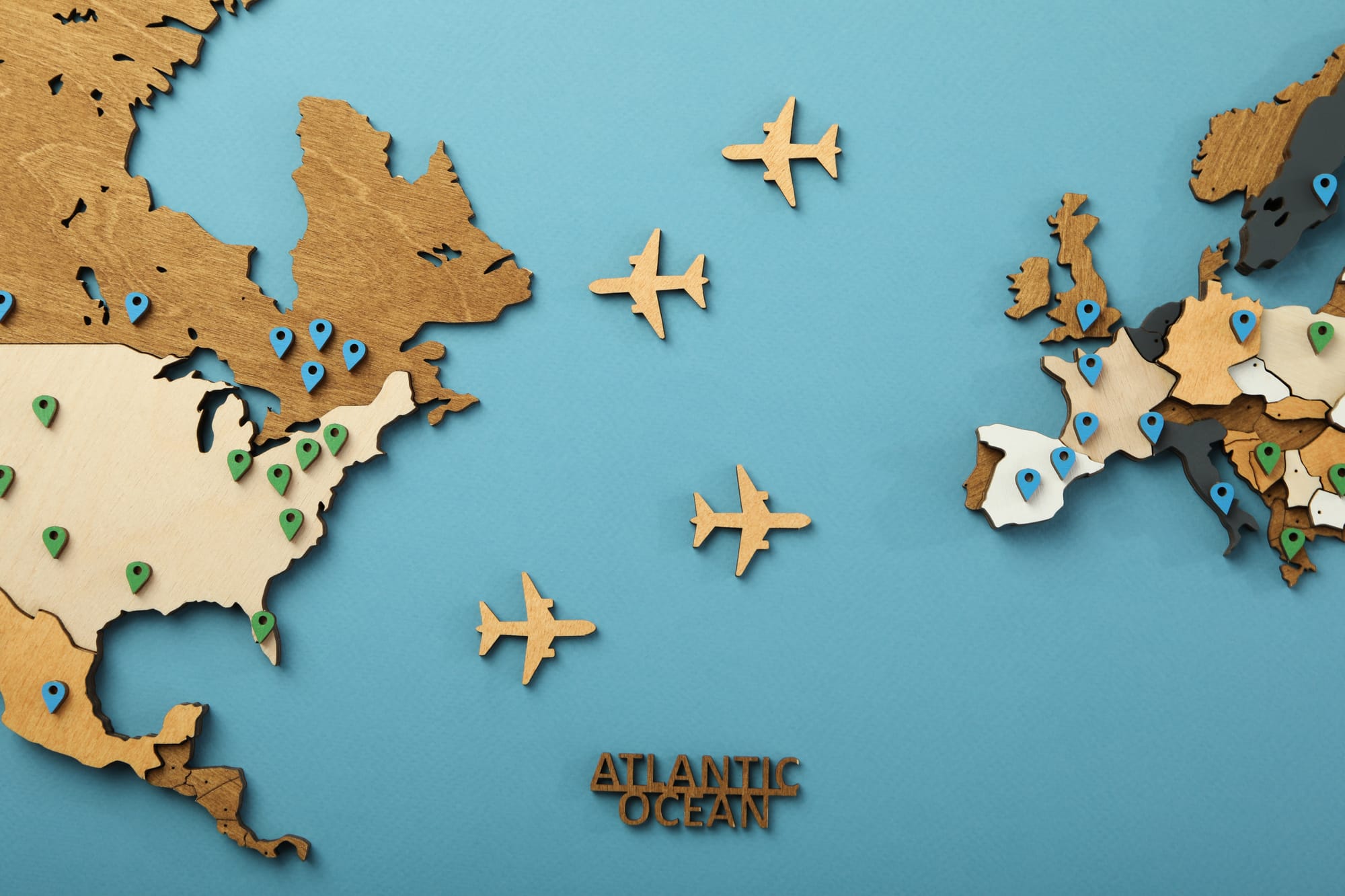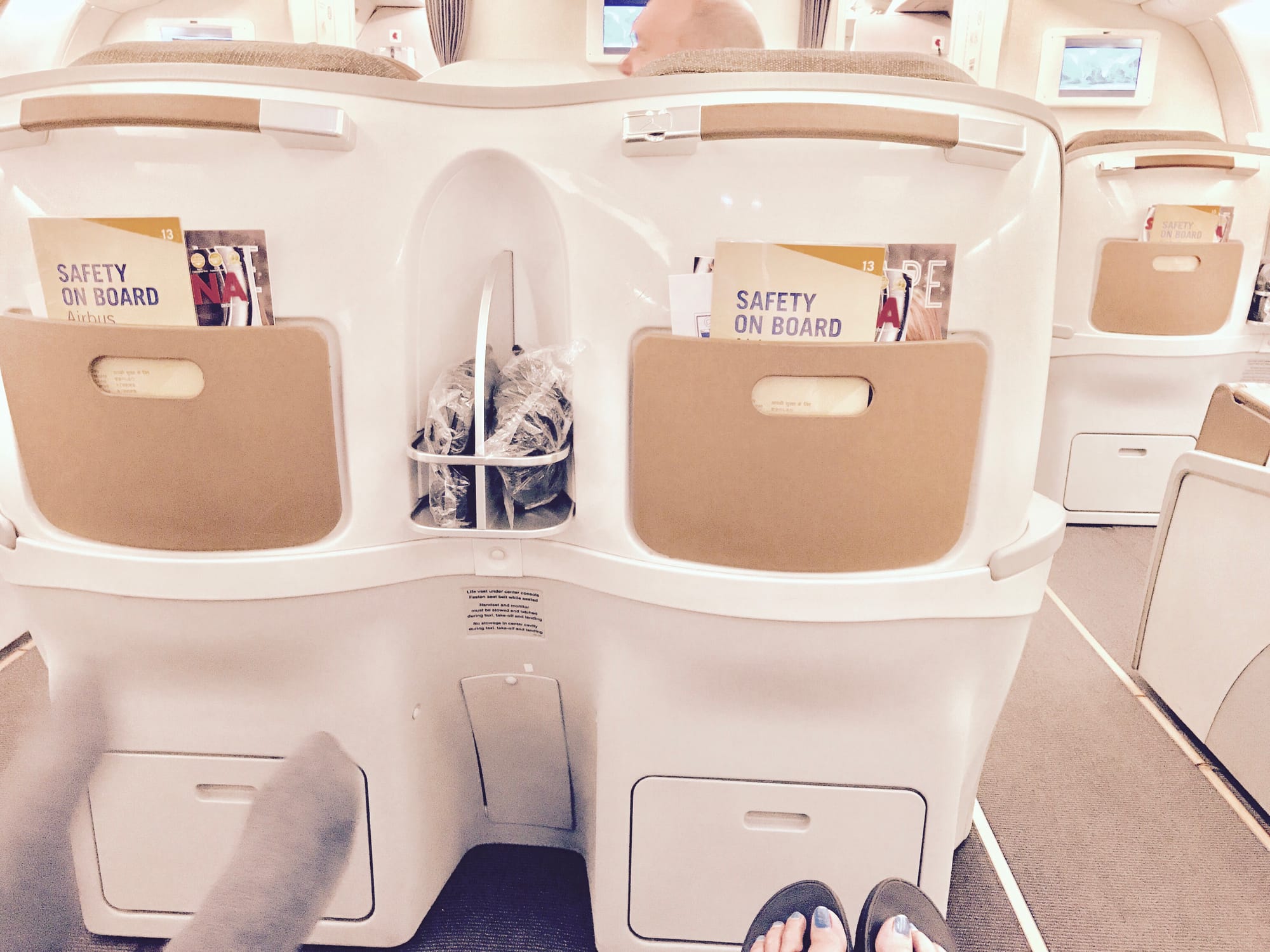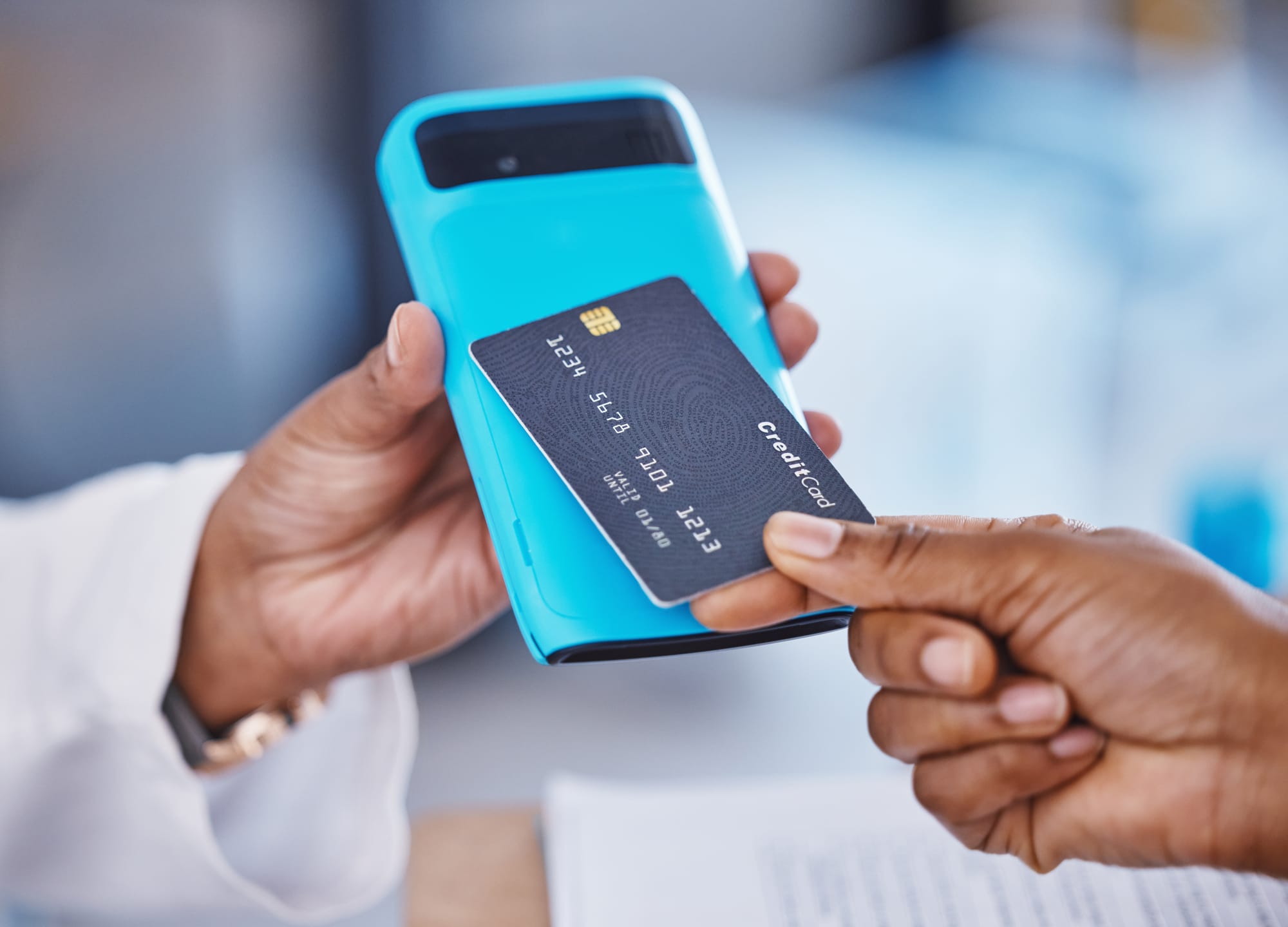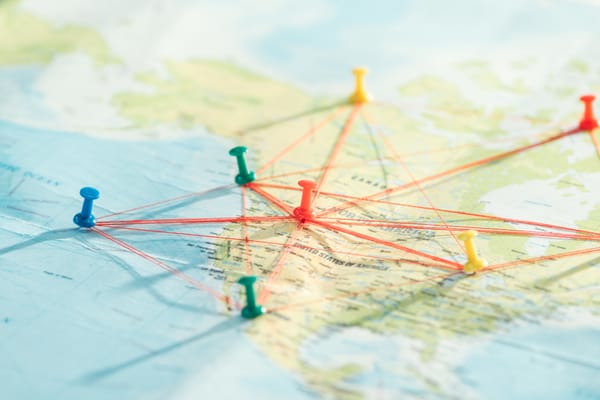The Cashback Trap: Why You’re Leaving Tens of Thousands on the Table
If you're a business owner, entrepreneur, or side hustler spending big each month, someone’s probably told you to just use a 2% cashback card. It's simple: swipe and get cash back. No mental gymnastics, no charts—just easy money in your account.

But here’s the truth: sticking with cashback is often a sign that you’ve outgrown your current rewards strategy. If your business spends $50,000 a month on credit cards, you’re making $1,000 back each month, or $12,000 a year. Not bad.
But if you swapped that same spending over to a points-earning strategy, you could unlock $30,000 to $100,000 in luxury travel annually*.
You’re not choosing between simple and complex. You’re choosing between average and exceptional.

Why Points Beat Cashback for Business Owners

Cash is easy. But points—used properly—are transformational.
- Travel Savings: Business owners frequently travel, and award redemptions can slash flight and hotel costs to near zero. That $5,000 business class flight to London? 100,000 points and $5.60 in taxes. That $800 hotel in Miami Beach during a major conference? Free night certificate or 25,000 points.
- Employee Perks: Let’s say your team is remote. Offering travel rewards for top performers—flights, getaways, even hotel stays—can be more motivating than cash bonuses. And often, cheaper.
- Founder Lifestyle: Points allow founders to live well without dipping into personal cash. First-class flights, five-star resorts, private suites in Paris—without pulling a cent from salary.
- Client Gifting and Entertaining: Want to impress a potential client? Book their hotel with points. Send a spa certificate from a loyalty program. Invite them to a luxury suite you booked for free.
Why People Avoid Points—and Why They're Wrong

"It’s too complicated."
Not if you set it up right. Once you choose the right cards and loyalty programs, your points accumulate automatically. And with services like UpNonStop (or with 30 minutes of research a month), redemptions become second nature.
"I don’t fly that much."
That’s fine. Points can be used for hotels, cruises, all-inclusive resorts, car rentals, event tickets, and even online shopping.
"I never find good flights."
Because you're searching like a cash buyer. Points redemptions work differently. Book far in advance or very last minute. Use airline partners. Know the sweet spots.
How to Actually Make the Switch: Step-by-Step

Step 1: Evaluate Your Spend
Break down your business spending by category: ads, travel, office supplies, dining, software subscriptions. Each spending type maps to different cards and bonus categories.
Step 2: Choose the Right Cards
Pick cards that earn transferable points (like Amex Membership Rewards, Chase Ultimate Rewards, or Capital One Miles). For most businesses, a good starter setup is:
- Amex Business Gold: 4x points on top two categories per month (usually ads and software)
- Chase Ink Business Preferred: 3x on travel, shipping, and digital ads
- Capital One Spark Miles for Business: 2x on everything if you want simplicity
Step 3: Centralize Your Spend
Make sure all employee cards roll up to your primary rewards account. Some businesses miss out on tens of thousands of points by letting employees use personal cards or unlinked accounts.
Step 4: Learn Basic Redemption Strategy
- Flights: Use airline partners, search flexible dates, and understand zones and stopover rules.
- Hotels: Book standard rooms at high-end properties for best value.
Examples: Cashback vs. Points in the Real World

Scenario A: $50K/month in business spend using 2% cashback card
- Annual cashback: $12,000
- That covers 2–3 domestic coach tickets and maybe a mid-tier hotel stay or two.
Scenario B: Same $50K/month with strategic points strategy
- Assume an average of 3x points across cards = 1.8M points/year
- Example redemptions:
- 2x Business Class roundtrips to Europe (300K points)
- 4x First Class roundtrips to NYC-LA (240K points)
- 6 nights at Park Hyatt Tokyo (180K points)
- 10 domestic economy flights for employees (250K points)
- 5 nights at a luxury resort in Hawaii (200K points)
- Still have points left over
- Estimated value: $40,000–$60,000 in travel benefits
Usage Ideas: How SMBs Are Leveraging Points
- Consulting Firm: Sends partners to conferences in Asia using business class awards. Their clients assume they paid thousands—they didn’t.
- Plumbing Company: Owner uses points for family vacations and team retreats. No need to pull from company profits.
- Digital Agency: Offers a trip to Mexico every quarter for top-performing team. All done with points.
- Boutique CPA: Uses hotel points to house out-of-town clients during tax season.
The 12-Month Payoff
In one year, a strategic switch can unlock:
- 1–2 international business class trips
- Dozens of employee flights or hotel stays
- VIP upgrades, perks, and lounge access
- Founder travel that feels like a raise (but isn’t on payroll)
And all of it is done without increasing your budget.
The Redemption Hall of Fame: Incredible Ways to Redeem Points for Massive Value
Not all points redemptions are created equal. You could spend 60,000 points to book a $400 domestic flight… or use those same points to book a $4,000 flight in lie-flat business class to Europe. When you start using points the right way, your same business spend stops buying printer paper and starts buying life upgrades.
This section highlights the redemptions that make you say, "Wait, that was free?"
Here are the best of the best...
Roundtrip Business Class to Europe

Estimated Value: $4,000 – $7,000
Points Needed: 88,000 – 120,000 roundtrip
Flying business class to Europe is no longer just for executives at Fortune 500 companies. With strategic use of points, small business owners and their teams can enjoy lie-flat comfort, airport lounge access, champagne in the sky, and restful sleep — for the price of a few clicks and some taxes.
Best programs:
- Avianca LifeMiles: 63,000 points one-way from East Coast to Europe on Star Alliance partners like Lufthansa or SWISS.
- AirCanada Aeroplan: 70,000 points one-way from most U.S. cities to Europe.
- Virgin Atlantic Flying Club: 50,000–77,500 points one-way on Delta when saver space is available.
Taxes and Fees: $5.60 to $250 depending on the program and carrier.
A $50,000/month spend with a 3x average multiplier earns 1.8 million points a year. That’s at least 15 roundtrip business class flights to Europe — worth over $60,000.
Five-Star Resort in Hawaii

Estimated Value: $800 – $1,400 per night
Points Needed: 25,000 – 85,000 points per night
Whether it's a team retreat or a well-earned vacation, Hawaii is a dream destination — and one of the most expensive hotel markets in the U.S. Luckily, it’s also a goldmine for points.
Top redemptions:
- Andaz Maui at Wailea Resort (World of Hyatt): 35,000–45,000 points/night
- Grand Wailea, A Waldorf Astoria Resort (Hilton Honors): 95,000–120,000 points/night
- Ritz-Carlton Kapalua (Marriott Bonvoy): 80,000–100,000 points/night
A five-night stay for two people could easily cost $6,000–$10,000 in cash. With points? Just a fraction.
Bonus: Hyatt gives you the fifth night free if you book with points and hold elite status.
Roundtrip First Class Between New York and Los Angeles

Estimated Value: $1,200 – $1,800
Points Needed: 60,000 – 70,000 roundtrip
Some of the best domestic redemptions are the transcontinental first-class routes — especially when flying American Flagship First, Delta One, or JetBlue Mint.
Booking options:
- Use American Airlines miles or Alaska Mileage Plan to book AA’s Flagship First.
- Virgin Atlantic Flying Club to book Delta One (from 45,000 points one-way when available).
- TrueBlue points with JetBlue (value varies but often close to 1.5–2 cents/point).
A founder could take four first-class trips per year between NYC and LA for under 300,000 points — often less than $200 in taxes total.
This is also a great way to make cross-country business travel less exhausting and more productive.
Luxury Hotel Stay During a Major Conference

Estimated Value: $700 – $1,000 per night
Points Needed: 25,000 – 60,000 per night
Every year, major conferences cause hotel prices to skyrocket — especially in cities like Miami, Austin, Las Vegas, and San Francisco. But points don't inflate in the same way if you book early.
Examples:
- JW Marriott Austin during SXSW: $800+ cash, or 50,000 points per night
- W South Beach during Art Basel: $1,100/night cash, or 60,000 points
- Grand Hyatt San Francisco during Salesforce’s Dreamforce: $950/night cash, or 25,000 Hyatt points
Business owners attending (or sponsoring) these events can save thousands just by redeeming wisely. You can also house staff or clients without dipping into operating cash.
All-Inclusive Resorts with Points

Estimated Value: $500 – $900 per night
Points Needed: 25,000 – 75,000 per night (double occupancy)
All-inclusive redemptions are often overlooked, but they’re among the highest ROI opportunities — because they cover not just the room, but also food, drinks, and entertainment.
Top picks:
- Hyatt Ziva and Zilara properties (25,000–50,000 points/night for two adults)
- Hilton All-Inclusive Resorts in Mexico and the Caribbean
- Marriott’s Al Maha Desert Resort (if you’re feeling extra)
A 4-night getaway for two adults could cost $3,000–$4,000 — or just 160,000 Hyatt points. That’s less than two months of credit card spend for many businesses.
Business Class to Asia

Estimated Value: $5,000 – $9,000
Points Needed: 90,000 – 120,000 one-way
Flying to Tokyo, Seoul, Bangkok, or Singapore in business class can easily cost nearly $10,000. Booking it with points turns a corporate trip into a luxury experience.
Great options:
- ANA via Virgin Atlantic (60,000–65,000 points one-way, though taxes can be high)
- EVA Air via Air Canada or Avianca (75,000–85,000 points one-way)
- Qatar Airways Qsuites via American Airlines or British Airways Avios (for Southeast Asia routing)
If your business is expanding or meeting international clients, this is one of the best-value redemptions on earth.
Booking Travel for Employees and Clients

Estimated Value: Variable, but often $300 – $700 per flight
Points Needed: 15,000 – 30,000 per domestic roundtrip
Booking travel for others is a brilliant way to deploy points without cost. Airline programs allow you to book flights for anyone. The same goes for most hotel programs.
Scenarios:
- Fly your team to HQ every quarter
- Cover flights for remote staff attending an off-site retreat
- House your top client in a four-star hotel during a product launch
- Gift a weekend getaway to a referral partner
A company spending $600,000 annually could cover dozens of flights and stays like these with points — and still have value left for personal use.
Suite Upgrades and Premium Rooms

Estimated Value: $150 – $400 per night
Points Needed: 6,000 – 20,000 (on top of base redemption)
Many programs let you redeem points or certificates to upgrade to a suite or club-level room. These are especially valuable when traveling with a spouse, kids, or clients.
Example:
- Book a standard room at the Grand Hyatt Kauai (25,000 points) and use 6,000 more points to confirm an upgrade to an ocean-view suite that costs $1,200+ per night in cash.
Even if you don’t travel often, using points to elevate a trip makes it far more memorable and relaxing — with no impact on the bottom line.
Cent-Per-Point Breakdown: How It Stacks Up
Let’s do the math on value per point. Here’s how some of the redemptions compare:
| Redemption | Points Used | Cash Value | Value per Point |
|---|---|---|---|
| Business Class to Europe (roundtrip) | 100,000 | $5,000 | 5.0 cents |
| Hyatt Resort in Maui | 40,000 | $1,200 | 3.0 cents |
| First Class JFK–LAX (roundtrip) | 60,000 | $1,500 | 2.5 cents |
| All-Inclusive in Cancun (4 nights, 2 pax) | 160,000 | $3,500 | 2.2 cents |
| Marriott Bonvoy during conference | 50,000 | $1,000 | 2.0 cents |
| Domestic economy flight | 25,000 | $300 | 1.2 cents |
Most cashback programs yield exactly 1 cent per dollar spent. With points, smart redemptions can get 2x to 5x that value — meaning your effective ROI on spend is drastically higher.
Think Bigger with Every Swipe

If your business is spending six or seven figures a year and you’re only getting 2% back in cash, you’re missing out on a world of opportunity.
Points aren’t just perks. They’re strategy. Used right, they unlock:
- Luxury business travel that impresses clients and reduces burnout
- Free team retreats and employee incentives
- Five-star founder lifestyle without dipping into salary
- Client loyalty through elevated gifting
- Huge operational savings on unavoidable travel costs
If cashback gives you a small refund, points give you a strategic advantage.
And the best part? You don’t need to be an expert. You just need to start choosing better cards and making smarter redemptions.
If you’re ready to turn business expenses into personal and professional upgrades — without spending a dollar more — the time to switch is now.
Final Thoughts
Cashback is easy—but points, when used strategically, are a financial engine for growth, motivation, and personal lifestyle.
If your business is spending tens of thousands a month and still playing the 2% cashback game, it’s time to level up. You don’t need to be a travel hacker. You just need to stop leaving free value on the table.
And if you want help making the switch without the headache? That’s what we’re here for.




